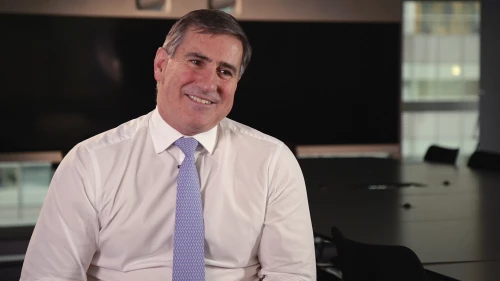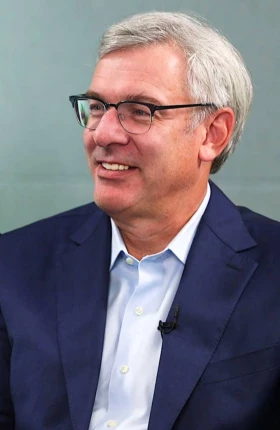When Darryl West took the helm as group CIO at HSBC in 2015, he was tasked with transforming both the way that IT operated and how it interfaced with the overall business. Over the two and a half years that West has been heading up the bank’s technology function, his department not only brought in new tools and reshaped the way HSBC uses technology but also developed new ways of improving the customer experience and the business.
With more than 30 years of experience, West, who is based in Hong Kong, leads a global team of 40,000 who are working to transform HSBC’s technology and become the world’s leading financial services technology team.
As IT becomes more and more critical to the world of banking, the partnership between technology and the business has become one of the most important facets of operations. Darryl West continues to drive a series of strategies that are helping to bring HSBC to the forefront of technology.
What were some of your biggest goals when you took over IT for HSBC?
My mandate was to take hold of the IT function and turn it into a high-performing team of technology people, partnering with the business to help transform the company. This was not just an IT transformation; it was actually the enablement of a business transformation.
We worked in close collaboration with the business to determine what programs it needed to implement in the transformation and to build new customer channels for all the businesses.
In parallel, we reconfigured how we deliver IT. We transformed our own team and set about the journey of simplifying the architecture of a complex, 150-year-old global banking group. We had a number of different applications and infrastructures that had been built up from our various acquisitions and needed to be simplified. Those complexities were causing issues in terms of our time to market, our cost to support, and our cost to deliver. So we set about transforming the IT function to enable that larger business transformation to take place.
A Few Key Lessons from CIO Darryl West
A Few Key Lessons from CIO Darryl West
- Getting the right operating model is an important first step.
- Short time frames can offer some of the biggest opportunities.
- Learn to leverage the newest technologies.
- Technology is critical to the future of business.
- Honest assessments of strengths and goals early on are vital to large-scale transformations.
What steps did you take in implementing such a large-scale transformation in such a short time frame? What challenges did you face?
Getting IT organized in the right way was the first step. We organized into a cohesive global team, properly interfacing with the businesses and the functions, recruiting the right people or putting the right people in place to be credible partners for the business.
Part of what we did was move resources around between locations. We are a global company with resources in over 70 countries. As part of our transformation, we looked at optimizing our operating model. This included a review of where our staff were located and how they could be deployed most effectively.
The harder part of our two and a half years of transformation has been the fundamental architectural changes we had to make. If you’re ripping out systems and replacing them with new ones, or if you’re taking ten versions of something and then trying to consolidate them into one or two, that’s a much tougher task to do in a short time frame.
What advice can you offer on this kind of large-scale transformation?
My advice to people would be to get the right operating model agreed upon with the business. Be really clear about what they’re trying to deliver, be really clear about the program of work that they need you to deliver, and then do a serious assessment of your capability to do that. Ask yourself whether you have the right organization structure. Do you have the right people? Are you using the right methods? Really examine the way you do things, because that’s going to be the core element of the transformation.
We also started adopting agile and DevOps to help improve the way our IT operates and to transform the business. It’s been a big journey of unifying development and operations, toward having more of a vertical where you’ve got IT people—architects, developers, security individuals—and the business all on the same team, highly optimized for delivery.
The speed at which a team moves is also critical to the transformation. Technology can be a major conduit for changes that optimize a cost base, or improve controls, risk assessments, and risk management systems. A lot of these rely on the speed at which the IT team can deliver the solutions.
What are some of the most important changes you hope to see through on the business and IT sides?
We’re seeing an increasing shift toward the use of mobile channels and devices in the retail and wealth businesses. This has meant adapting our services to be consumed through those channels as well as our physical locations.
Big data is obviously something we need to be getting really good at. We’re now able to take large amounts of data for analysis, identifying insights and trends to enhance the customer experience.
We’ve also come to the conclusion that partnering with world-class cloud providers—like Google, Amazon, and Microsoft—allows us to utilize the technologies that they are good at, enabling us to focus more on managing our customers and creating better experiences.
Technology today is an essential enabler of everything we’re doing. At the core of the company is a technology function that’s producing solutions and outcomes for customers. We recognize that technology is at the center of all of that, and that the world is changing around us. The environment is changing quickly, and our customers are demanding that we use the newest technology available to them as consumers. Whether they are corporates or small businesses or individuals, they are consuming these services in a much different way than they used to. So I think technology is going to play a pivotal role in the way we do our business going forward; it will be a key differentiator in what our customers are looking for.






